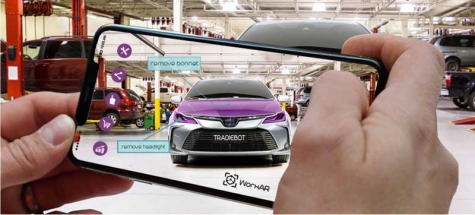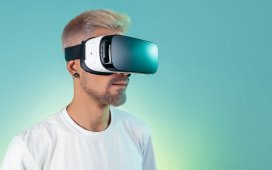Work is rapidly evolving. The Organisation for Economic Co-operation and Development (OECD) estimates that 14% of existing jobs in OECD countries could disappear as a result of automation, and another 32% could be partially automated. The World Economic Forum predicts that 133 million new jobs in major economies will be created by 2022 to meet the demands of the Fourth Industrial Revolution and calls for a “reskilling revolution” to ensure that talent supply matches shifts in demand.
Emphasis on formal academic qualifications may begin to wane as employers focus on useful skills rather than degrees. Enterprise virtual reality (VR) training could play an important role in this reskilling boom, especially as the convergence of artificial intelligence (AI), cloud computing and 5G connectivity enables more powerful and flexible VR training at a lower cost for companies.
The Changing Economy
The COVID-19 pandemic has reshaped the economy in a myriad of ways. As well as making many office workers into home workers and forcing companies to find effective methods for remote working and remote learning, it has also accelerated the drive toward automation, changing the jobs and skills that employers need. The World Economic Forum calls for a focus on “reskilling and future-proofing workforces for the jobs of the future” to improve social mobility and reduce inequity.
However, this reskilling revolution isn’t just about the workforce gaining technical skills. Also critical are the aspects of work that machines can’t take over: creativity, collaboration and interpersonal skills and the skills needed for non-automatable jobs like HR, child and health care, and education. But gaining and practicing these all-important “soft skills” and people skills is challenging in an environment where in-person contact is limited. Technology can play an important role here, with technological advances making remote training more accessible and more effective.
Coming Together in a Virtual World
VR is one of those tools that are gathering momentum for enterprise training. Enterprise VR is becoming more powerful, and organizations are applied it to a wider range of scenarios. VR immerses users in a realistic simulated environment, enabling companies to recreate workplace conditions anytime, anywhere. VR immerses users in a realistic simulated environment, enabling companies to recreate workplace conditions anytime, anywhere.
VR training can be more effective than traditional training methods, because it provides “hands-on” experience and generates a wealth of valuable data. This data offers deep insights into employee performance on both an individual and a workforce level, can help improve training efficiency, and can highlight critical points of failure in the “real world.”
Crucially, VR has collaboration at its heart. At a time when meaningful collaboration is particularly difficult, the value of VR here is clear: It enables productive co-working and co-learning without any physical contact. Learners can inhabit the same virtual space and interact with each other, and additional team members can also watch the session in 2D.
AI + 5G + Cloud
The convergence of advanced artificial intelligence, widespread 5G connectivity and powerful cloud computing is opening up more possibilities for enterprise VR, especially when it comes to soft skills training. Imagine, for example, learners interacting with an AI-powered avatar in a virtual environment. The avatar analyses the trainees’ movements and speech and responds in real time with relevant feedback and guidance, powered by AI. 5G then enables the platform to send data quickly, without lag or latency issues, and cloud technology means that the VR rendering happens in the cloud, so the device itself is simple and inexpensive.
This trio of technology is also presenting exciting possibilities for augmented reality (AR) training, although AR is more immediately applicable to technical skills than soft skills. In manufacturing, for example, the technology could guide a worker on a factory floor on how to use a piece of machinery with an AR overlay, powered by AI, that provides real-time analysis and instruction and remote diagnosis and corrections.
New Training Horizons
The COVID-19 pandemic has accelerated changes that were already underway. The skills we need to be successful at work are changing quickly, but the ways that we can gain these skills are, too. As companies have been forced to try new ways of working, the adoption of new workplace and training technology has been rapid, and experimentation and mistakes have led to improvements.
It is more important than ever for companies to find effective ways of reskilling and upskilling their employees remotely. Luckily, the combination of enterprise VR with AI, 5G and cloud computing is making it possible in exciting new ways. It is more important than ever for companies to find effective ways of reskilling and upskilling their employees remotely.
Quelle:




